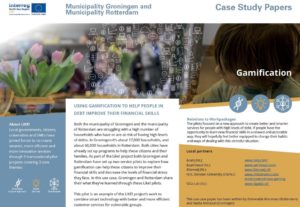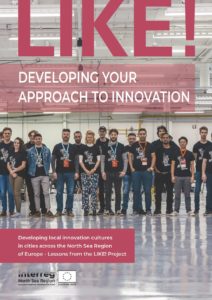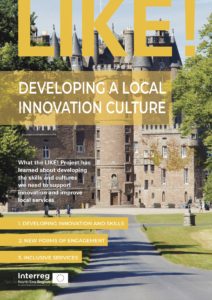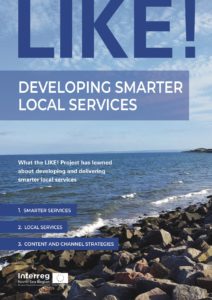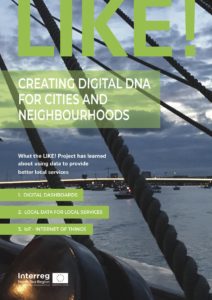
Interreg projects usually finish pulling everything they’ve done together in a fairly dry, technical, private report for the funder which summarises the project’s activities and achievements and which is never seen again. For Like! – a €4.2M 10 partner collaborative project that I set up in 2016 to stimulate digital innovation cultures in the public sector in Europe – we took a different tack.
The Like! project used a different content strategy to share our learning and to drive impact. We pulled together the findings and lessons learned from international collaborations and pilots into four thematic magazines, rather than forcing readers to access a series of online posts/downloads. Magazines – using a structured but informal format – were the best way to bring together the learning from Like! in an accessible form that would be widely distributed. The magazine format allowed us to better organise our content, and to tell a clearer story about the work we did, and how others could learn from it. This more accessible (and more organised) output format increased the project’s accessibility and impact.
Creating a content strategy that delivers the right content for the right audiences
Like! supported the development of what we called ‘local digital innovation cultures’. These provided a foundation for local efforts to develop and deliver a broad range of innovative solutions that improved e-government and local public service delivery.
Like already had a raft of existing material in their content library. They had over 30 detailed use-cases and reports that explored key topics that LIKE partners were piloting in depth – like how different partners were using chatbots or how they were using data to work with different social or geographical groups.
I was brought in to develop a two-part content strategy to accelerate Like!’s impact. Firstly, to complete the production of use-cases for LIKE, which organised the project’s activities and highlighted the lessons learned. Secondly, I wrote a set of four magazines for Like! These brought together LIKE’s learning and activities in a clear and structured way. This allowed audiences to learn more about what the project did, how the projects’ activities fitted together, and how they could adopt new ways of working.
Using magazines to highlight digital innovation
LIKE’s magazine strategy had three overarching goals. First was to provide an overview of LIKE’s work on key themes across the project. Second was to show the value of the project’s international collaborations and to show the value of working together on shared challenges. Third, and most important of all, was to make this work accessible to a wider audience – as we wanted other municipalities and organisations to adopt approaches developed and tested during Like!
We wanted to make the project’s overview useful for audiences and organisations who had less experience in innovation. These organisations need to see real-world approaches that worked in environments/situations they could relate to. The magazine format allows us to do this by covering a huge range of material in a single, cohesive document. Readers could follow up the more detailed format of the use-cases if they wanted more information.
Like all Interreg projects, a key aim of LIKE was to show the value of international collaborations between partners and project supporters. While some of the LIKE use cases were collaborative – such as the design thinking use case between Rotterdam and Aalborg – most use cases focused on work from a single partner. So it was important that the magazines could pull together all the related work from LIKE!’s 9 international pilots so that the value and lessons from this sort of collaborative approach were clear.
From a broad overview to the details in key themes
The four LIKE! magazines bring together a stand alone overview/introduction to the project, plus a magazine for each of the project’s three main themes – developing a local innovation culture, developing smarter services, and creating a digital DNA for cities and neighbourhoods.
The Like! magazine portfolio
Want to know more?
If you’d like to know more about the work I do – particularly on writing and content strategies – check my other case studies and resources and get in touch!
